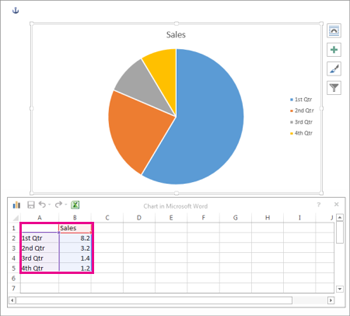
How To Create A Pie Chart In Excel 2013 For Mac
Pie Chart In Excel 2010. Unlike other charts in Microsoft Excel, pie charts require that data in your worksheet be contained in only one row or column (although an additional row or column can be used to indicate a “category”). When you first create a pie chart, Excel will use the default colors and design. Divx player free for mac. But if you want to customize your chart to your own liking, you have plenty of options. The easiest way to get an entirely new look is with chart styles.
How to auto update a chart after entering new data in Excel? Supposing you have created a chart to track the daily sales based on a range of data in your workbook. But you need to change or edit the number of the data every day, in this case, you have to update the chart manually so it includes the new data. Are there any quick tricks to help you auto update a chart when you add new data to an existing chart range in Excel? Navigation-- (add usually used charts to AutoText pane, only one click when you need to insert it in any sheets.). If you have the following range of data and column chart, now you want the chart update automatically when you enter new information. In Excel 2007, 2010 or 2013, you can create a table to expand the data range, and the chart will update automatically.
Please do as this: 1. Select the data range and click Table under Insert tab, see screenshot: 2.
In the Create Table dialog box, if your data has headers, please check My table has headers option, then click OK. See screenshot: 3.
And the data range is formatted as a table, see screenshot: 4. Now, when you add values for June, and the chart will be updated automatically. See screenshot: Notes: 1.
Your new entering data must be adjacent to the above data, it means there is no blank rows or columns between the new data and the existing data. In the table, you are able to insert data between the existing values. Auto update a chart after entering new data with dynamic formula But sometimes, you don’t want to change the range to table, and the above method is not available in Excel 2003 or earlier version. Here I can introduce you a complex dynamic formula method. Take the following data and chart for example: 1.
First, you need to create a defined name and a dynamic formula for each column. Click Formulas > Define Name. In the New Name dialog box, enter Date into the Name box, and choose current worksheet name from Scope drop down list, and then enter =OFFSET($A$2,0,0,COUNTA($A:$A)-1) formula into the Refers to box, see screenshot: 3.
Click OK, and then repeat the above two steps, you can create a dynamic range for each series using the following range names and formulas: • Column B: Ruby: =OFFSET($B$2,0,0,COUNTA($B:$B)-1); • Column C: James: =OFFSET($C$2,0,0,COUNTA($C:$C)-1); • Column D: Freda: =OFFSET($D$2,0,0,COUNTA($D:$D)-1) Note: In the above formulas, the OFFSET function refers to the first data point, and the COUNTA refers to the entire column of data. After defining the names and formulas for each column data, then right click any column in your chart, and choose Select Data, see screenshot: 5. In the Select Data Source dialog box, from Legend Entries(Series) section, click Ruby and then click the Edit button, in the popped out Edit Series dialog, enter =Sheet3!Ruby under Series values section, see screenshots: 6.
